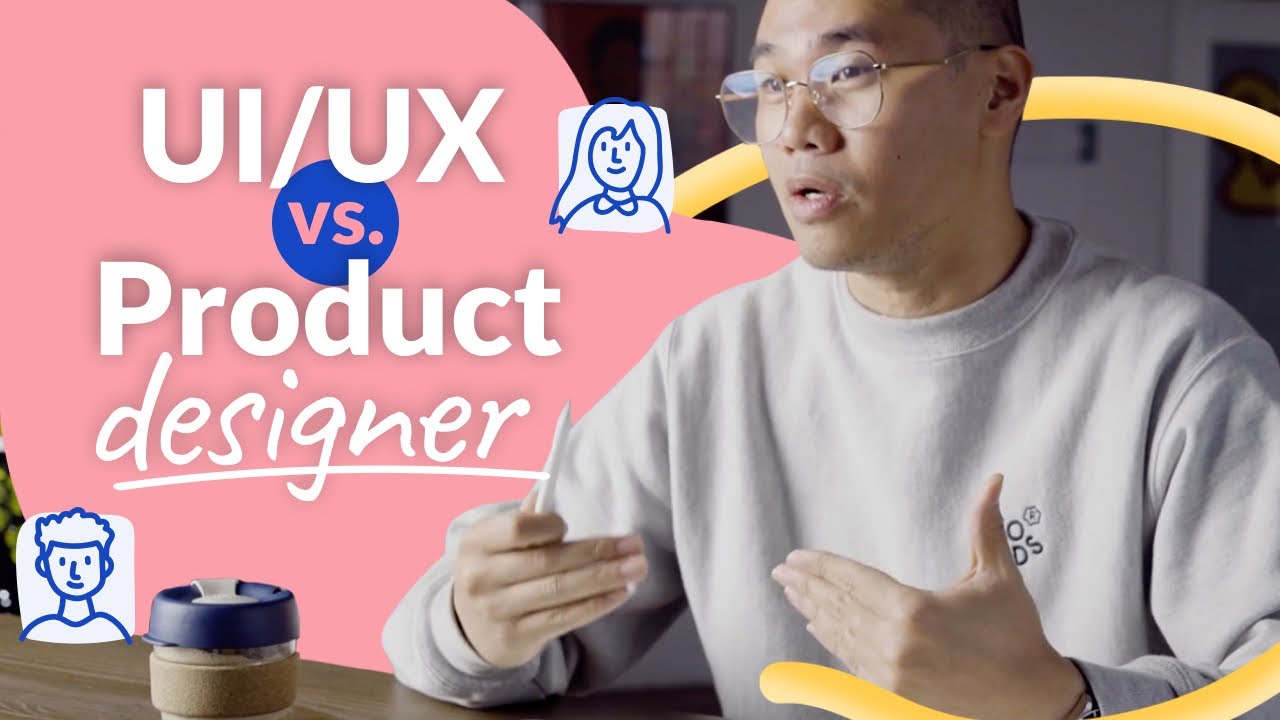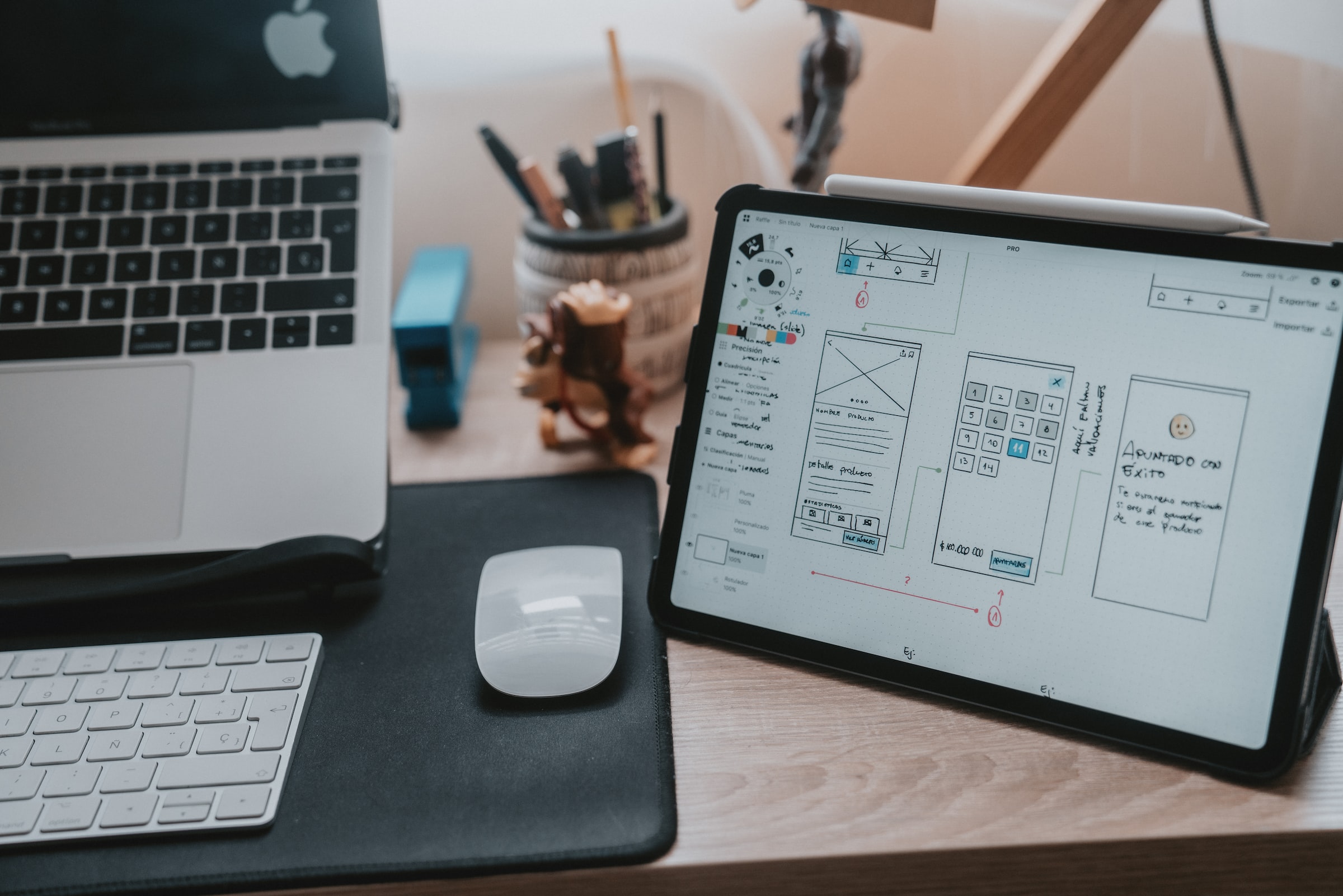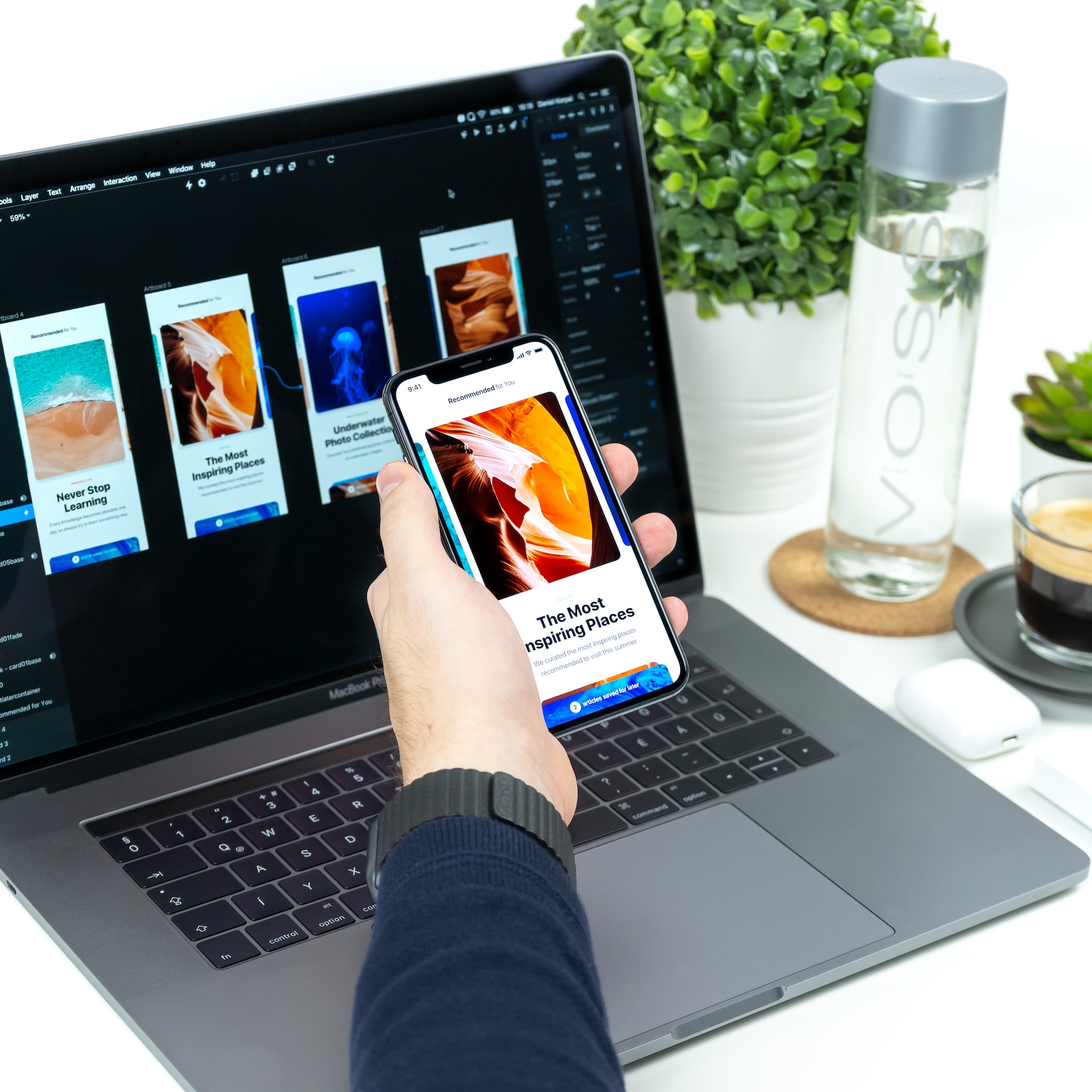Interface & User Experience, two words that, despite the frequent exchange, have very different meanings.
There are a few well-known arguments in the field of design that are never truly resolved.
The distinction between user interface and user experiencedesign is one of the important ones.
What Precisely Is The Difference?
We've all overheard debates about a product's fantastic "UX" or a website's subpar "UI" while strolling down trendy streets in the world's IT capitals.
Is it a dialect that you will never learn?
Are these individuals merely employing slang to be cool?
Okay, the latter is possibly true, but the other options are definitely false. You've come to the right place if you want to understand what UX and UI exactly mean and how they differ. An outline of what will be covered in this article can be seen below.
The user interface (UI), at its most basic level, is a collection of screens, pages, and visual components (such as buttons and icons) that allow a user to interact with a good or service.
The internal experience a person experiences as they interact with every element of a company's products and services is known as the user experience (UX).
People frequently use these terms interchangeably and occasionally improperly. If you've ever wondered what UI and UX are and how they differ, keep reading.
Today, we'll delve a little deeper into the distinctions between UI and UX in order to better comprehend them.
What Is UI?
A user interface (UI) can be defined as anything that a user can interact with to use a digital good or service.
This covers everything, including keyboards, lights, audio, screens, and touchscreens.
However, it's useful to study more about the history of UI and how it has developed into best practices and a profession in order to comprehend the growth of UI.

UX Design vs UI Design - What's The Difference? (2024)
An Overview Of The User Interface's History
The command line interface was required in the 1970s if you wanted to use a computer. Today's graphical user interfaces weren't yet commercially available.
Users had to use programming languages to talk to computers, which required what seemed like a million lines of code to do something simple.
By the 1980s, computer scientists at Xerox PARC had created the first graphical user interface (GUI), which let people use personal computers by entering commands graphically through icons, buttons, menus, and checkboxes.
With this change in technology, anyone could use a computer without knowing how tocode, and the personal computer revolution was born.
The Macintosh personal computer, which featured a point-and-click mouse, was released by Apple Computer in 1984.
The Macintosh was the first home computer that used this style of interface and did well in the market.
Personal and businesscomputers are widely available, so interfaces had to be created with users in mind.
Users wouldn't buy if they couldn't engage with their machines. The consequence was the creation of the UI designer.
The UI designer's job has changed as systems, preferences, expectations, and accessibility have increased demand for devices, as with any growing technology.
Nowadays, UI designers not only work on computer interfaces but increasingly on mobile devices, augmented and virtual reality, and even "invisible" or screenless interfaces like voice, gesture, and light (also known as zero UI).
The potential for UI designers to work on websites, mobile apps, wearable technology, and smart home gadgets is essentially endless nowadays.
There will always be a need to create user interfaces that people of different ages, socioeconomic backgrounds, and technical knowledge can use efficiently as long as computers remain a part of daily life.
Describe UX
The advancements in UI led to changes in user experience, or UX. Users' experiences, whether favorable, bad, or neutral, affected how they felt about those encounters once there was anything for them to interact with.
When he was working at Apple in the early 1990s, cognitive scientist Don Norman is credited with coining the phrase "user experience," which he defines as,
That is a broad term that could include any encounter a person might have with a good or service, not just one that takes place online.
Some UX experts have chosen to refer to the discipline as customer experience, while others have taken it a step further and just called it experience design.
Whatever it's termed, Norman's original concept of UX which is comprehensive and always oriented toward the human individual it's engaging with is at the heart of all thought experience design.
Peter Moreville made a great visual to show what makes a good UX design, so people could better understand what makes a great experience.
This "usability honeycomb" has grown into a set of best practices that UX experts use to guide their work at many points where users interact with a product, such as:
- How would they learn about the product of your business?
- The series of steps they perform when utilizing the interface.
- The thoughts and feelings that arise as they attempt to complete their mission.
- The overall conclusions they draw from the interaction.
UX designers are responsible for making sure that the business offers a product or service that meets the needs of the customer and makes it easy for them to achieve their goals.
To better understand their users through study and experimentation, UX designers collaborate closely with UI designers, UX researchers, marketers, and product teams.
They use both quantitative and qualitative user research to build experiences and make them better over time.
What Distinguishes UI And UX From One Another?
A UI is made up of all the components that allow users to engage with a product or service at the most fundamental level.
UX, on the other hand, refers to how a user feels about a product or service as a whole after using it.
Consider Google as an example. A terrific experience may be had without bells and whistles, as evidenced by its renown for being minimalist.
By putting the user first, Google is aware that visitors to the site are only looking for one thing: information. They also need it right away.
The fact that "google" is a commonly used verb demonstrates how well the business meets those expectations and experiences.
A few other search engines exist nowadays, and one may quickly find out just about anything they've ever wanted to know.
You wouldn't be able to find a solution to your question right away if, as an example, every Google search took 15 seconds to return a result.
You would have a very different experience with Google even if the interface remained the same.
Design
UI Design - What Is It?
An expert says that UI design is the process of using typography, graphics, and other visual design elements to turn a simple interface into something that is easy to understand and use.
The process of turning wireframes into a finished graphical user interface is known as UI design.
This makes a product more useful and creates a connection between the user and the product on an emotional level.
So, a user experience (UX) is made up of many user interfaces (UI), which work together to make a product in a (hopefully) smooth way.
As its focus is obvious from its name (interfaces)we may define the boundaries of UI in a much more concrete way than those of UX.
The user experience is the sum of how a series of interfaces and other less obvious parts of a product work together.
UI, on the other hand, is only concerned with how the design of each screen or interface affects the user's journey.

UI/UX Design vs Product Design
What Is The Job Of A UI Designer?
At the prototyping stage, a UI designer's task starts where a UX designer's job stops.
They take the wireframes and add visual design to improve usability, looks, and compatibility with different screen sizes.
The Product's Appearance And Texture
Research reveals information on users, rivals, and the newest trends in design. We need to find inspiration and produce user-friendly interfaces.
- Visual design: UI designers are in charge of creating the user interface's visual components, such as colors, fonts, icons, buttons, and more.
- Graphic design and branding: The brand positioning of the entire product has a significant impact on the user interface (UI) design. The correct balance between usability and continuously displaying the brand identity specified by the marketing or creative team must be struck by designers. As a result, graphic design and UI design are tightly intertwined.
- Design systems: UI designers make style guides, pattern libraries, and components that tell how each element should look (color, font, etc.) to make sure that products and brands are all the same.
Adaptability And Interaction
Interfaces must look and work well on all platforms, devices, and screen sizes without any trouble.
UI designers can create an interface's interactivity via animations, transitions, or other interactive features.
UI prototyping is a live demonstration of every UI component and design interaction.
UI designers make them so that users can test them and get a feel for how the product will work.
Explain UX Design.
UX design refers to the full experience someone has with your product from start to finish, according to experts.
UX design is about understanding the overall journey of your people and converting it into a product, they say.
It tries to answer the question, How can I make it as easy and hassle-free as possible for people to achieve their goals?
In other words, UX design is focused on a customer journey's total user friendliness.
Additionally, there is substantial disagreement over the beginning and end of UX because of its lengthy history.
An issue is the beginning of UX, and a wireframe or prototype is the end result.
Let's get deeper into what UX design entails in practice, as that line may either clarify things or make them more unclear depending on how much you already know about design.
The Work Of A UX Designer
It's the job of a user experience designer to understand the customer journey.
This means making user flows, doing user testing, talking to customers, and knowing who the target audience is.
Let's examine the typical responsibilities of a UX designer.
An Analysis And Plan
Create a strategic plan at the start of the UX design process to make sure all stakeholders are on the same page and pursuing the same objectives.
While people frequently associate design with the visual, a UX designer's work consists primarily of conceptual problem-solving based on research and data.
Information architecture (IA) focuses on arranging and categorizing the contentof a website, app, or product with the intention of assisting users in finding information and achieving their objectives.
Prototyping And Wire Framing
This conceptual focus on the user journey means that a UX designer's influence on how a final product actually looks is limited.
- Creating the user flow: Part of the UX design process is talking to users to find out what they need and then making the best user flow to help them do their jobs.
- Wireframe: Which can be made digitally or by hand, is like the interface's skeleton and is the bare minimum needed to understand how a design will work on a functional level.
- Testing: Using a rough prototype or even just a paper mockup, UX designers test their ideas and assumptions early on in the design process. This helps them confirm their ideas and assumptions.
- Analysis: UX designers work closely with product managers and researchers to figure out how to interpret test results and decide what to do next.
Why Is UI/UX So Crucial?
While two similar products may achieve the same end result, their UX/UI reflects how they provide it.
If one of the products has a superior UX or UI UX or UI design, customers are going to utilize it more because they enjoy the overall experience.
How Do UI And UX Design Interact With One Another?
Despite their distinctions, UX and UI are not wholly distinct concepts; rather, they are both important and strongly interdependent in determining how a product will appear and operate.
No matter how lovely the interface is, without UX, consumers will become dissatisfied and quit your site.
Imagine spending weeks making a beautiful website, only to find that people can't find what they're looking for and find it hard to get around.
Even with excellent UX, users may be put off from using your product if the UI is unattractive or difficult to use.
On the other hand, consider that you undertake user research and testing to achieve an ideal user experience, but the text on your website is so light that people can hardly see it.
When designing a product with the user in mind, you will need both UI and UX to make sure that people can use it easily and enjoyably.
For those who are new to the field of design, this raises a related question.

What is UI vs. UX Design? A Practical Example in Under 6 Minutes
People Also Ask
Why Is User Interface And User Experience Important?
It improves user interaction with your website.
The integration of graphic components into the website, which enables website users to navigate across the web page, depends on both user interface and user experience.
What Is User Experience?
The term "user experience" describes how a product, application, system, or service makes the user feel.
It is a general term that can refer to anything, including how easily a user can navigate a product, how simple it is to use, how pertinent the shown content is, etc.
What Is The Importance Of User Experience?
Simply defined, UX is significant because it aims to meet user needs. It strives to deliver satisfying experiences that maintain customers loyalty to the good or service.
A meaningful user experience also makes it possible to map out client journeys on your website that are best for the success of your business.
Conclusion
UX and UI are both important parts of designing and making digital products, and you can't have one without the other. This makes them both very important skills to learn.
If you're interested in user research, problem-solving, and product architecture, consider focusing on UX design.
If you're a visual person who wants to design the finer details and make sure digital products are both beautiful and user-friendly, you might be leaning more towards UI.
If you're looking to become a multiskilled designer who can handle the product design process from start to finish, you might want to learn both UX and UI.


